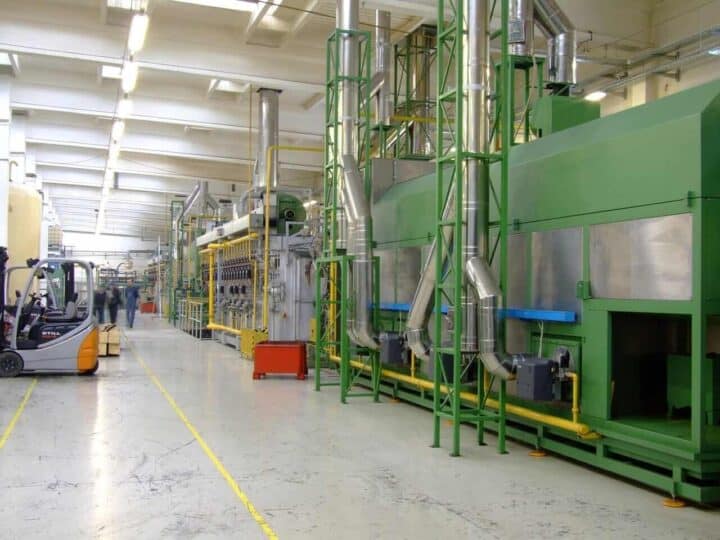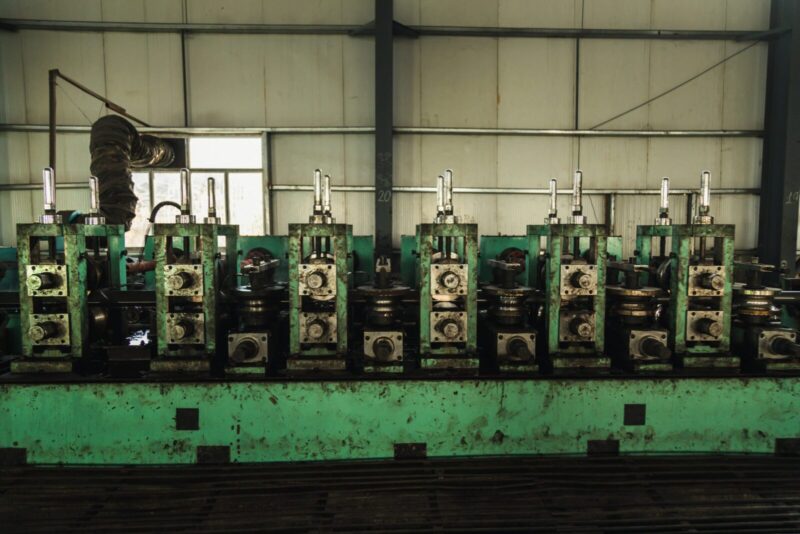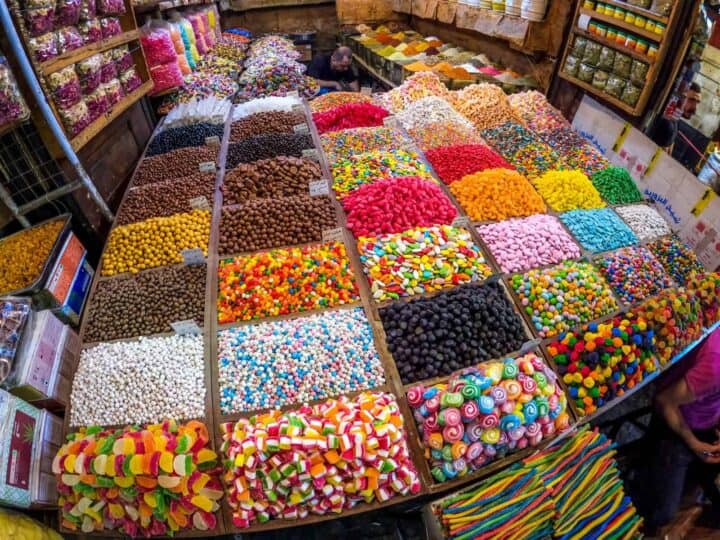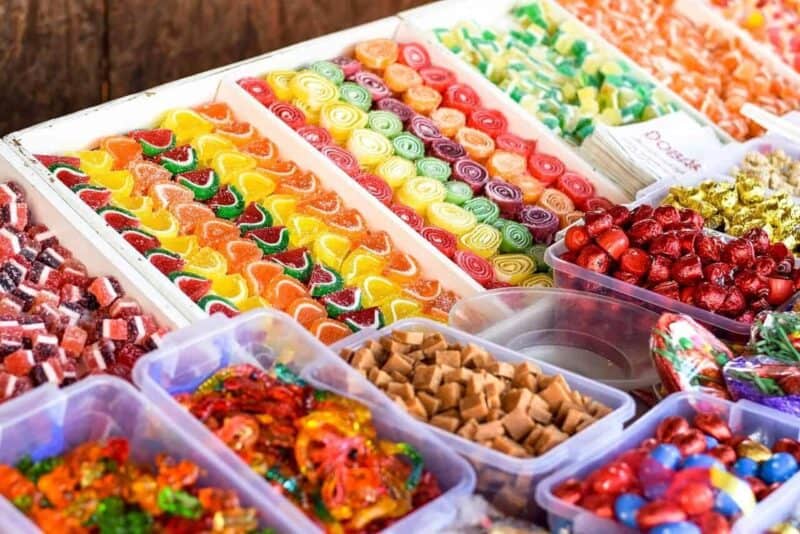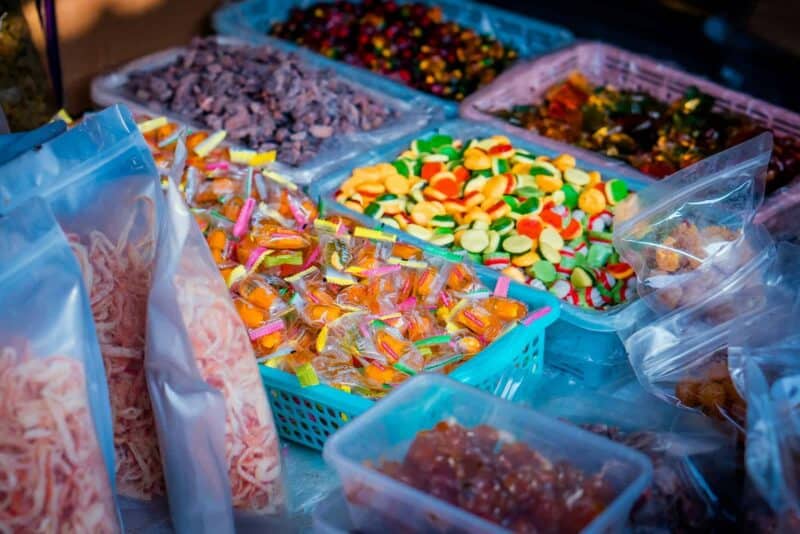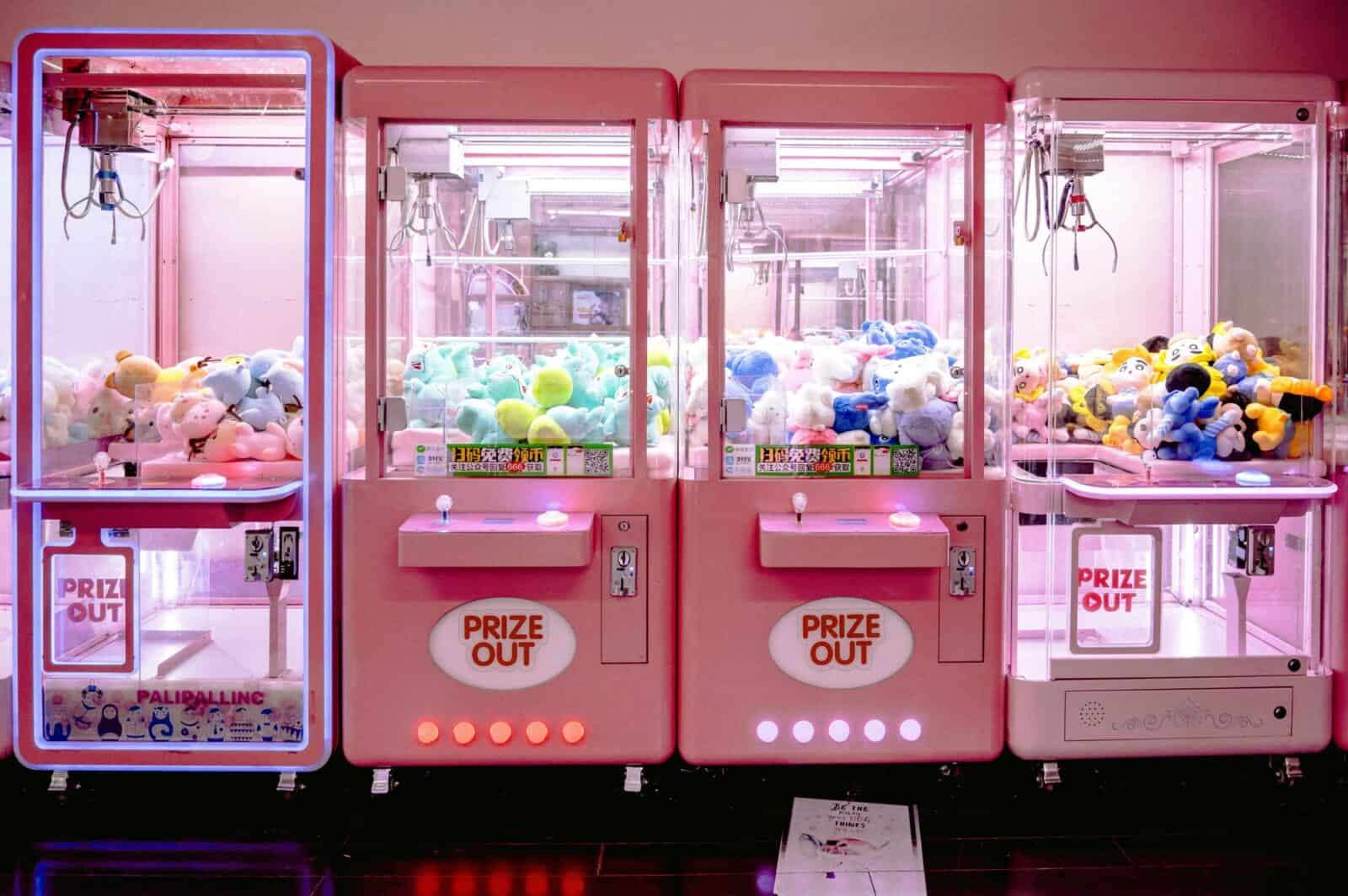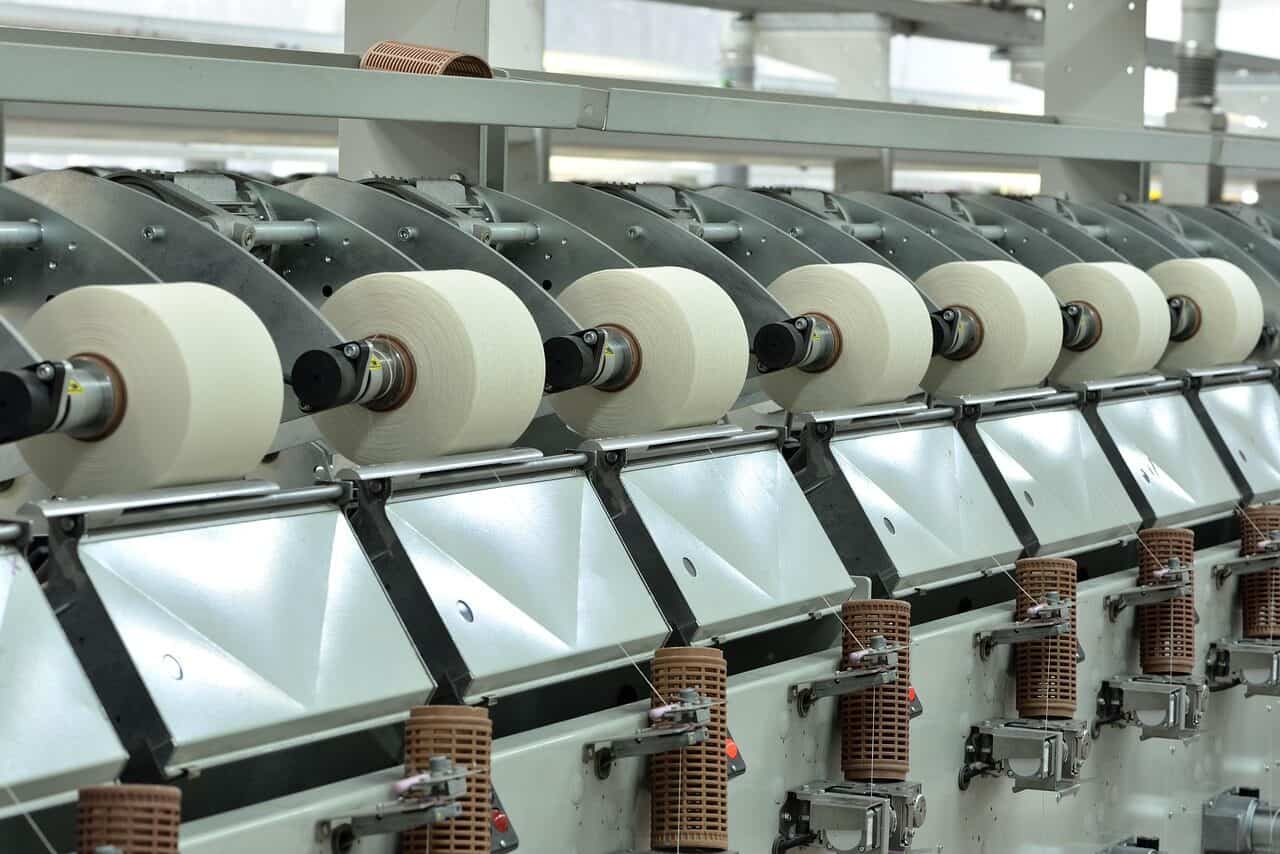Candy Production Line: A Professional Manufacturer’s Guide
Introduction
Ever wondered how millions of perfectly formed, deliciously consistent candies are produced every single day? It’s not magic; it’s a feat of engineering, precision, and strategy encapsulated in one powerful system: the candy production line. This is the engine that drives the global confectionery industry, turning simple raw materials into the treats enjoyed by billions. But for entrepreneurs and established manufacturers alike, navigating the complexities of this technology can be a daunting task.
This guide is designed to explain the entire process in simple terms. We will journey from the basic principles of a candy production line to the detailed workings of key machinery. You will learn how to select the right equipment for your specific needs, understand the different types of lines available, and look into the future of confectionery manufacturing. This guide provides the expert insights and practical frameworks necessary to navigate the world of candy production, whether you are starting a new venture or scaling an existing one.
What is a Candy Production Line?
A System-Based View
A common mistake is to view a candy production line as just a sequence of individual machines. A professional manufacturer sees it differently: it is a fully integrated, working system. Each component, from the initial raw material mixer to the final packaging unit, is designed to work together with the others. The failure or poor performance of one part can impact the entire operation.
The primary goals of this integrated system are clear and essential. First is consistency; every candy must have the same weight, shape, texture, and flavor. Second is quality control, ensuring every piece meets safety standards and brand specifications. Third is speed, maximizing output to meet market demand and achieve cost savings through volume. Finally, the system must offer scalability, allowing a business to grow its production capacity as it expands.
Key Modern Characteristics
Modern candy production line are defined by several core characteristics that set them apart from older, more basic manufacturing methods. Understanding these is key to appreciating their value.
- Automation: The most significant evolution is the shift towards comprehensive automation. This greatly reduces the need for manual labor, which in turn minimizes the potential for human error, improves cleanliness, and ensures a repeatable, consistent process 24/7.
- Modularity: Lines are no longer rigid, single-purpose installations. Modern designs emphasize modularity, giving producers the flexibility to add, remove, or change components. This allows for the production of different candy types or shapes on the same base line, maximizing the return on investment.
- Control: A centralized PLC (Programmable Logic Controller) system acts as the brain of the operation. From a single human-machine interface (HMI), operators can precisely manage every critical parameter, including cooking temperatures, mixing speeds, depositing times, and cooling curves. This level of control is fundamental to achieving high-quality results.
- Hygiene and Safety: Following global food safety standards is essential. This is reflected in the physical construction of the line. You will see extensive use of food-grade stainless steel (typically SS304 or SS316L), designs that eliminate hard-to-clean crevices, and compliance with Good Manufacturing Practices (GMP).
The Core Production Process
A Step-by-Step Journey
To truly understand a candy production line, one must follow the journey of the ingredients from their raw state to a finished, packaged product. While specifics vary by candy type, the core process follows a logical and sequential path.
- Ingredient Preparation and Mixing: The process begins with precision. Raw materials like sugar, corn syrup, water, and gelatin or pectin are automatically or semi-automatically weighed according to a pre-programmed recipe. These ingredients are then fed into large, heated pre-mixers or cookers. Here, they are blended into a uniform mixture, often with initial heating to begin the dissolving process.
- Cooking: This is arguably the most critical stage, as it determines the final texture and shelf life of the candy. The mixture is pumped into a high-capacity cooker. The type of cooker depends on the candy; a microfilm cooker provides rapid, high-temperature cooking for hard candies, while a vacuum cooker can achieve the same result at lower temperatures to prevent sugar discoloration. The goal is to cook the mass to a precise final moisture content, which can be as low as 1-2% for hard candy or much higher for gummies.
- Adding Flavors and Colors: Once the base candy mass is cooked, it is discharged into a mixing or holding tank. At this point, delicate ingredients that cannot withstand high cooking temperatures are added. This includes flavors, colors, and acids (like citric or malic acid for a sour taste). For functional candies, this is when active ingredients like vitamins, minerals, or CBD are introduced. Precision dosing pumps ensure that every batch receives the exact same amount of these additives for perfect consistency.
- Forming and Shaping: With the candy mass fully prepared, it’s time to give it a shape. The method used here defines the candy production line. For gummies and many hard candies, the mass is sent to a depositor, which injects a precise volume into molds (made of silicone, metal, or pressed in starch). For lollipops or stamped hard candies, the mass is pushed out into a “rope,” sized, and then stamped into shape by a forming die. For products like licorice, an extruder forces the mass through a die to create the final shape directly.
- Cooling: Immediately after forming, the hot and soft candies must be cooled to become solid and stable. They are transported through a long, enclosed cooling tunnel. These tunnels are climate-controlled, often with multiple zones that gradually reduce the temperature and humidity. Proper cooling is essential to prevent defects like cracking in hard candies or stickiness in gummies. The time spent in the tunnel can range from a few minutes to over half an hour, depending on the candy size and type.
- Finishing and Packaging: After exiting the cooling tunnel, the candies are removed from molds. They may then undergo a finishing process. Gummies are often tumbled in a large drum with a light coating of oil to prevent sticking, while sour candies might be coated with a sugar/acid mixture. From here, the finished candies are moved to automated packaging machines that weigh, bag, wrap, or box them at high speeds, ready for shipment.
Exploring Main Line Types
Matching Line to Candy
There is no universal candy production line. The equipment, process flow, and core technology are dictated entirely by the physical properties of the final product. A line designed to create a high-moisture, gelatin-based gummy is fundamentally different from one engineered to produce a low-moisture, glass-like hard candy. Understanding these distinctions is the first step for any potential buyer in identifying the technology relevant to their business goals. The machinery required for a chewy caramel, which involves mixing fats and proteins, shares little in common with the equipment for a simple lollipop.
Comparative Line Analysis
To clarify these differences, we can categorize the most common types of candy production lines. The following table provides a comparative overview, highlighting the key machinery and core principles that define each system. This analysis serves as a foundational guide to help you match your product vision with the appropriate manufacturing technology. Each line represents a specialized solution tailored to a specific set of confectionery challenges.
| Line Type | Primary Candy Produced | Key Machinery Components | Core Production Principle |
| Hard Candy Depositing Line | Hard candies, lozenges, sugar-free candies | Servo-controlled depositor, cooling tunnel, chain-type demolding | High-temperature cooked syrup is precisely deposited into molds. |
| Gummy & Jelly Line | Gummy bears, jelly beans, vitamin gummies | Starch mogul or starch-free depositor, oiling drum | A gelatin or pectin-based mixture is deposited into starch or silicone molds. |
| Toffee & Caramel Line | Chewy toffees, eclairs, soft caramels | Caramel cooker, pulling machine, cut-and-wrap machine | Fat and milk ingredients are cooked slowly; texture is developed through pulling. |
| Lollipop Forming Line | Ball lollipops, flat lollipops | Batch roller, rope sizer, lollipop forming & wrapping machine | A plastic candy rope is fed into a forming die that shapes and inserts the stick. |
This comparison illustrates that the choice of a candy production line is a commitment to a specific production methodology. While some lines offer a degree of flexibility—for instance, a depositing line might handle both hard candies and jellies with different recipes and settings—switching between fundamentally different categories like gummies and toffees would require a completely different set of equipment.
How to Choose the Right Line
Key Factors Before Investing
Selecting a candy production line is one of the most significant capital investments a confectionery business will make. The decision goes far beyond the initial price tag; it’s a strategic choice that will shape your production capabilities, operating costs, and growth potential for years to come. Moving from “what is a candy production line” to “what is the right line for my business” requires a systematic evaluation of several key factors.
- Production Capacity (kg/hr): This is the most fundamental specification. You must align the line’s output with realistic sales forecasts. Start by asking: What is my target output for Year 1? What about Year 3 and Year 5? It’s often wiser to invest in a line with slightly more capacity than you immediately need to accommodate future growth without requiring a second major investment.
- Budget Constraints: It is crucial to consider the Total Cost of Ownership (TCO), not just the initial purchase price. TCO includes the equipment cost, installation, shipping, training, utility consumption, maintenance, and spare parts over several years. Cost ranges can vary dramatically; entry-level, semi-automatic lines for a single product may start around $50,000, while high-capacity, multi-functional automated lines from top-tier manufacturers can easily exceed $500,000.
- Space and Facility Requirements: A candy production line requires significant space. You must have a detailed understanding of your facility’s available floor area, ceiling height, and floor load capacity. Furthermore, you must account for the required utilities: electrical power (voltage and phase), clean water supply, drainage, and often, a compressed air system. A reliable manufacturer will provide detailed layout drawings and utility specifications early in the discussion.
- Level of Automation: The choice between a semi-automatic and a fully automatic line is a balance between capital investment and operating costs. In regions with high labor costs, a fully automatic line that minimizes operator involvement can offer a faster return on investment. Full automation also guarantees a higher level of consistency and quality control, which is critical for medical or health supplement products.
- Product Flexibility: Consider your long-term product roadmap. Will you only ever produce one type of candy? Or do you envision launching new flavors, shapes, or even entirely new product types in the future? If so, look for a line with modular components, such as interchangeable depositor nozzle plates or easily swappable molds, that can adapt to your evolving needs.

A Decision-Making Checklist
To aid in this complex decision, we have developed a practical checklist. Use this table to structure your discussions with potential suppliers and to compare different offerings systematically. It forces you to ask the right questions and to look for specific indicators of a quality machine and a reliable partner.
| Evaluation Factor | Key Questions to Ask Yourself | What to Look for in a Manufacturer/Supplier |
| Production Capacity | What is my target output for Year 1? Year 3? | Do they offer scalable solutions? Can the line be upgraded later? |
| Candy Type & Quality | What specific candy will I make? What is my quality standard? | Do they have proven experience with my candy type? Can they provide samples? |
| Automation Level | What is my local labor cost? What level of consistency do I need? | Do they offer semi-automatic and fully automatic options? Is the control system user-friendly (e.g., Siemens, Allen-Bradley)? |
| Space & Utilities | What is the available space in my facility? | Do they provide detailed layout drawings and utility requirements upfront? |
| After-Sales Support | Who will install the line? What about training and spare parts? | In our experience, strong after-sales support is essential. Look for suppliers who offer installation supervision, on-site operator training, and a clear warranty policy with readily available spare parts. |
Key Machinery Deep Dive
The Cooker
The cooker is where the fundamental chemistry of candy making occurs. Its function is to dissolve ingredients and boil the resulting syrup to a precise solids concentration, which dictates the final product’s texture. For hard candies, this can be 98% solids or higher. Cookers range from simple open-kettle atmospheric cookers for small batches to advanced, continuous systems. Continuous cookers, such as microfilm cookers, pass a thin film of syrup over a heated surface for extremely rapid and efficient cooking. This prevents sugar breakdown and discoloration, which is vital for high-quality products.
Manufacturer’s Insight: For high-clarity hard candies or lozenges, a continuous vacuum cooker is superior. By cooking under a vacuum, the boiling point of the syrup is lowered. This allows you to reach the final solids concentration at a lower temperature, preventing any sugar burn (caramelization) and producing a crystal-clear candy. The vacuum also effectively removes trapped air bubbles, further enhancing clarity and density.
The Depositor

The depositor is the heart of any modern gummy or hard candy line, responsible for precision and uniformity. After cooking, the candy mass is held in a heated, jacketed hopper on the depositor. From there, a series of pistons or pumps inject a precise, pre-set volume of the mass into molds passing underneath. The entire process is synchronized—the movement of the molds and the action of the depositing pistons are perfectly timed to ensure every mold cavity is filled cleanly and accurately. The design of the nozzles and the accuracy of the depositing mechanism are critical for producing candies of a consistent weight and shape.
Manufacturer’s Insight: Look for servo-driven depositors over older, pneumatic-driven models. While pneumatic systems are cheaper, servo motors offer unparalleled control and repeatability. They can ensure weight accuracy within a fraction of a gram, which significantly reduces product waste. Over the lifetime of the machine, the material savings from a servo depositor’s accuracy can easily pay for its higher initial cost, making it a critical factor for profitability.
The Cooling Tunnel
The function of the cooling tunnel is to bring the hot, freshly deposited candies down to room temperature in a controlled manner, allowing them to solidify and become stable for demolding and packaging. This is not simply a refrigerated box. A well-designed tunnel is a sophisticated piece of climate-control equipment. It uses high-velocity air, often dehumidified, to efficiently remove heat from the candies and molds. The air is circulated in a counter-flow pattern—coolest at the exit and warmer at the entrance—to prevent thermal shock to the candies, which can cause cracking or surface defects.
Manufacturer’s Insight: A common mistake made by new producers is underestimating their cooling requirements. A short or inefficient cooling tunnel is a frequent bottleneck for the entire candy production line. For superior results, especially with deposited hard candies, invest in a tunnel with multiple climate zones. An initial zone with slightly higher humidity can prevent case hardening, while subsequent zones with very dry, cold air ensure a thorough and stable final cure. This level of control results in better texture, clarity, and shelf stability.
The Cut-and-Wrap Machine
For candies like toffees, caramels, or some types of hard candies that are not deposited, the cut-and-wrap machine provides the final touch. This integrated unit takes a conditioned “rope” of candy from a batch roller and rope sizer, cuts it into individual pieces of a precise length, and immediately wraps each piece. Wrapping styles vary and include twist-wrap (common for toffees) or fold-wrap (like a bouillon cube). These machines are marvels of mechanical engineering, operating at high speeds to cut and wrap hundreds of pieces per minute.
Manufacturer’s Insight: When choosing a cut-and-wrap machine, its compatibility with your specific wrapping material is a critical, often overlooked, factor. Different films (e.g., polypropylene, cellophane, waxed paper) behave differently at high speeds. Some are more prone to static electricity, which causes them to cling to the machine, while others may tear or stretch. Always insist on testing the machine with the exact wrapping film you intend to use. A successful test run at your target production speed is the only true confirmation of compatibility.
Broadening the Scope
Beyond Traditional Confectionery

While we often associate them with traditional sweets, the applications for modern candy production lines are surprisingly diverse and expanding into high-value adjacent industries. The precision, cleanliness, and scalability of these systems make them ideal for a range of products beyond simple confectionery.
- Large-Scale Confectionery: This remains the primary application. Global brands rely on massive, highly automated lines running 24/7 to produce the billions of candies, chocolates, and gums sold worldwide.
- Boutique & Artisanal Production: On the other end of the spectrum, smaller, more flexible, and semi-automatic lines have empowered a new generation of craft candy makers. These systems allow for professional-grade production at a scale suitable for local or regional markets.
- Pharmaceutical Industry: The technology is perfectly suited for producing medicated lozenges and throat drops. A depositing line can guarantee that each lozenge contains a precise, verifiable dose of an active pharmaceutical ingredient (API), an essential requirement for medical products.
- Health Supplement Sector: This is one of the fastest-growing application areas. The boom in consumer demand for “functional foods” has led to a massive market for vitamin gummies, supplements, CBD-infused edibles, and other fortified confectionery. Candy production lines provide the ideal platform for creating these popular and tasty delivery systems for health and wellness ingredients.
The Future of Production

Innovations for the Future
The candy production industry is not static. It is constantly evolving, driven by technological advancements, changing consumer preferences, and new regulatory landscapes. Staying aware of these trends is crucial for any business looking to make a long-term investment. A candy production line purchased today must be able to meet the challenges of tomorrow. The following trends are actively shaping the next generation of confectionery equipment.
| Trend | Description | Impact on candy production line |
| Automation & Industry 4.0 | Integration of IoT sensors, AI for predictive maintenance, and robotics. | Lines will become “smarter,” with self-diagnosing capabilities and fully automated quality control, reducing downtime. |
| Sustainability | Focus on reducing energy consumption, water usage, and packaging waste. | Demand for energy-efficient cookers, water-recycling cooling systems, and machines compatible with biodegradable films. |
| Functional Ingredients | Incorporation of vitamins, minerals, protein, and botanicals. | Lines must handle more sensitive ingredients, requiring precise, lower-temperature processing and specialized dosing systems. |
| Personalization & Small Batches | Consumer demand for unique flavors, shapes, and custom orders. | A shift towards more modular, flexible, and easy-to-clean lines that allow for rapid changeovers between small batches. |
These trends indicate a clear direction for the industry: towards smarter, more efficient, more flexible, and more sustainable manufacturing. When evaluating a new line, it is wise to ask potential suppliers how their technology addresses these future-forward concepts.
Conclusion: Your Partner in Production
We have journeyed through the intricate world of the candy production line, from defining it as an integrated system to examining its core processes and key machinery. We have explored the diverse types of lines available and provided a strategic framework, complete with a detailed buyer’s checklist, to guide your investment decision. Finally, we looked ahead at the trends shaping the future of the industry.
The central message is clear: a successful, scalable, and profitable candy business is built on the foundation of the right production technology. This is a decision that requires a blend of product vision, financial prudence, and technical understanding. Choosing the right line is not merely a purchase; it is a strategic partnership with the technology that will bring your confectionery creations to life.
Armed with this knowledge, you are no longer just a potential buyer; you are an informed strategist ready to build the future of confectionery. We are here to help you turn that vision into a delicious reality.
Frequently Asked Questions
Q1: What is the typical maintenance schedule for a candy production line?
A: A robust maintenance schedule is critical for longevity and performance. It typically includes daily tasks like thorough cleaning and sanitation. Weekly, it involves lubrication of moving parts and inspection of seals and gaskets. Monthly or quarterly, deeper mechanical and electrical checks are performed by trained technicians. We provide a detailed, customized maintenance schedule and checklist with every line we deliver.
Q2: How much physical space do I need for a complete line?
A: The space requirement varies dramatically based on capacity and candy type. A small-scale, semi-automatic hard candy line might fit within 50-100 square meters (approx. 500-1000 sq ft). In contrast, a high-capacity, fully automated gummy line with a starch mogul and conditioning rooms can easily require over 500 square meters (approx. 5,000 sq ft). We always provide custom layout drawings tailored to your specific facility to ensure a perfect fit.
Q3: Can a single candy production line make different types of candy?
A: It depends on the line’s design and the candy types. Some lines offer excellent flexibility. For example, a depositing line can often be used to make both hard candies and lollipops simply by changing the molds. However, producing fundamentally different products, like gummies (which require a starch or starch-free system) and toffees (which require pulling machines), is not possible on a single line. The best first step is to discuss your complete current and future product range with us.
Q4: What is the estimated Return on Investment (ROI)?
A: ROI is highly dependent on variables like your product’s profit margin, production volume, and local operating costs (labor, utilities). However, the primary financial benefit of upgrading to an automated line is the significant reduction in labor costs and product waste. For high-volume operations, the efficiency gains and material savings often lead to a full return on the initial investment within a period of 18 to 36 months.
Reference Links:
National Confectioners Association (NCA) https://candyusa.com/
Professional Manufacturing Confectioners Association (PMCA) https://pmca.com/
American Association of Candy Technologists (AACT) https://www.aactcandy.org/
Manufacturing Confectioner Journal https://gomc.com/
Candy Industry Magazine https://www.candyindustry.com/
Rockwell Automation – Allen-Bradley Industrial Controls https://www.rockwellautomation.com/
International Society of Automation (ISA) https://www.isa.org/
ScienceDirect – Food Process Control https://www.sciencedirect.com/topics/food-science/food-process-control
PMMI – The Association for Packaging and Processing Technologies https://www.pmmi.org/
International Confectionery Association (ICA) https://www.international-confectionery.org/

